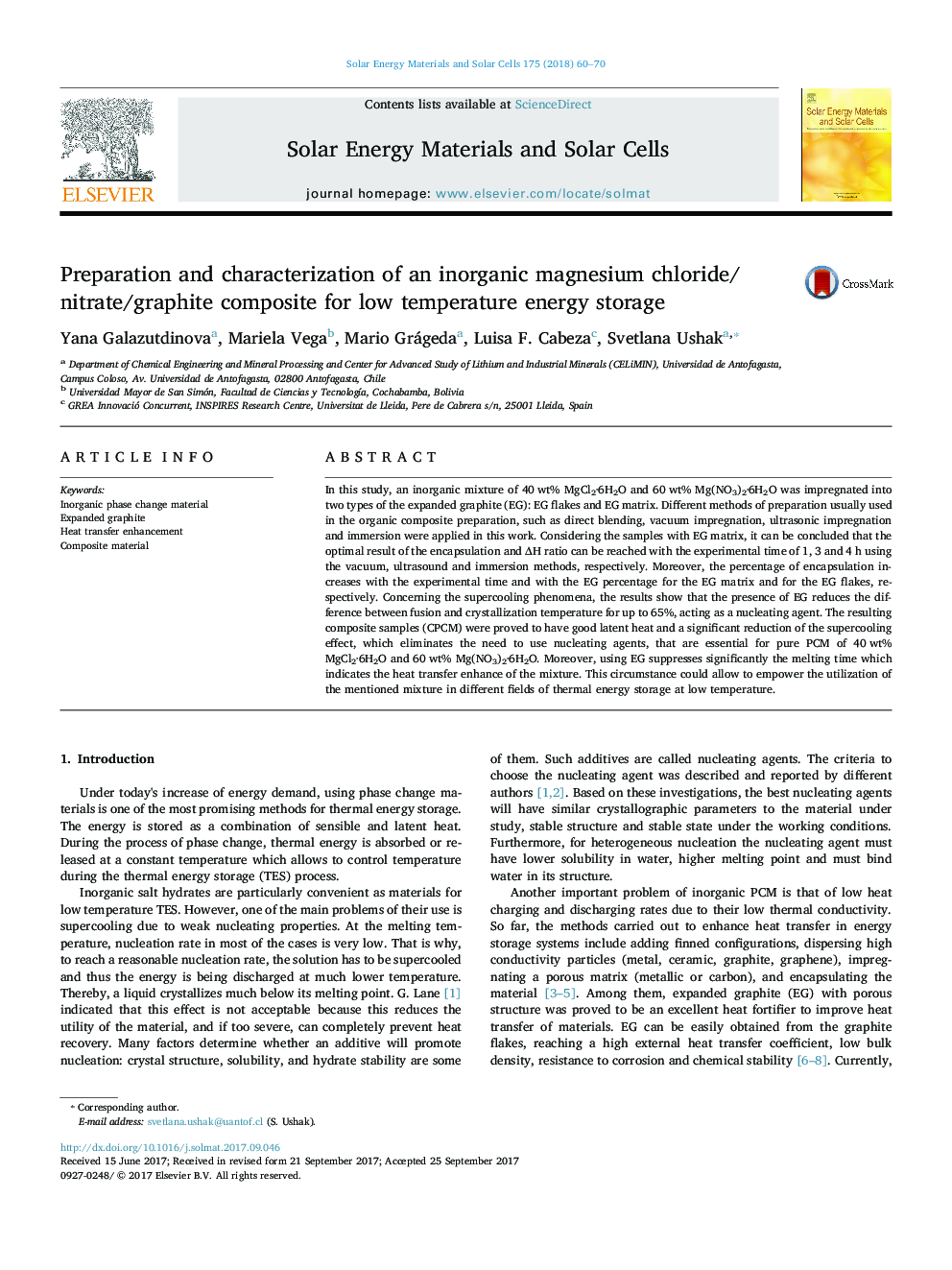| Article ID | Journal | Published Year | Pages | File Type |
|---|---|---|---|---|
| 6534501 | Solar Energy Materials and Solar Cells | 2018 | 11 Pages |
Abstract
In this study, an inorganic mixture of 40 wt% MgCl2·6H2O and 60 wt% Mg(NO3)2·6H2O was impregnated into two types of the expanded graphite (EG): EG flakes and EG matrix. Different methods of preparation usually used in the organic composite preparation, such as direct blending, vacuum impregnation, ultrasonic impregnation and immersion were applied in this work. Considering the samples with EG matrix, it can be concluded that the optimal result of the encapsulation and ÎH ratio can be reached with the experimental time of 1, 3 and 4 h using the vacuum, ultrasound and immersion methods, respectively. Moreover, the percentage of encapsulation increases with the experimental time and with the EG percentage for the EG matrix and for the EG flakes, respectively. Concerning the supercooling phenomena, the results show that the presence of EG reduces the difference between fusion and crystallization temperature for up to 65%, acting as а nucleating agent. The resulting composite samples (CPCM) were proved to have good latent heat and a significant reduction of the supercooling effect, which eliminates the need to use nucleating agents, that are essential for pure PCM of 40 wt% MgCl2·6H2O and 60 wt% Mg(NO3)2·6H2O. Moreover, using EG suppresses significantly the melting time which indicates the heat transfer enhance of the mixture. This circumstance could allow to empower the utilization of the mentioned mixture in different fields of thermal energy storage at low temperature.
Related Topics
Physical Sciences and Engineering
Chemical Engineering
Catalysis
Authors
Yana Galazutdinova, Mariela Vega, Mario Grágeda, Luisa F. Cabeza, Svetlana Ushak,
